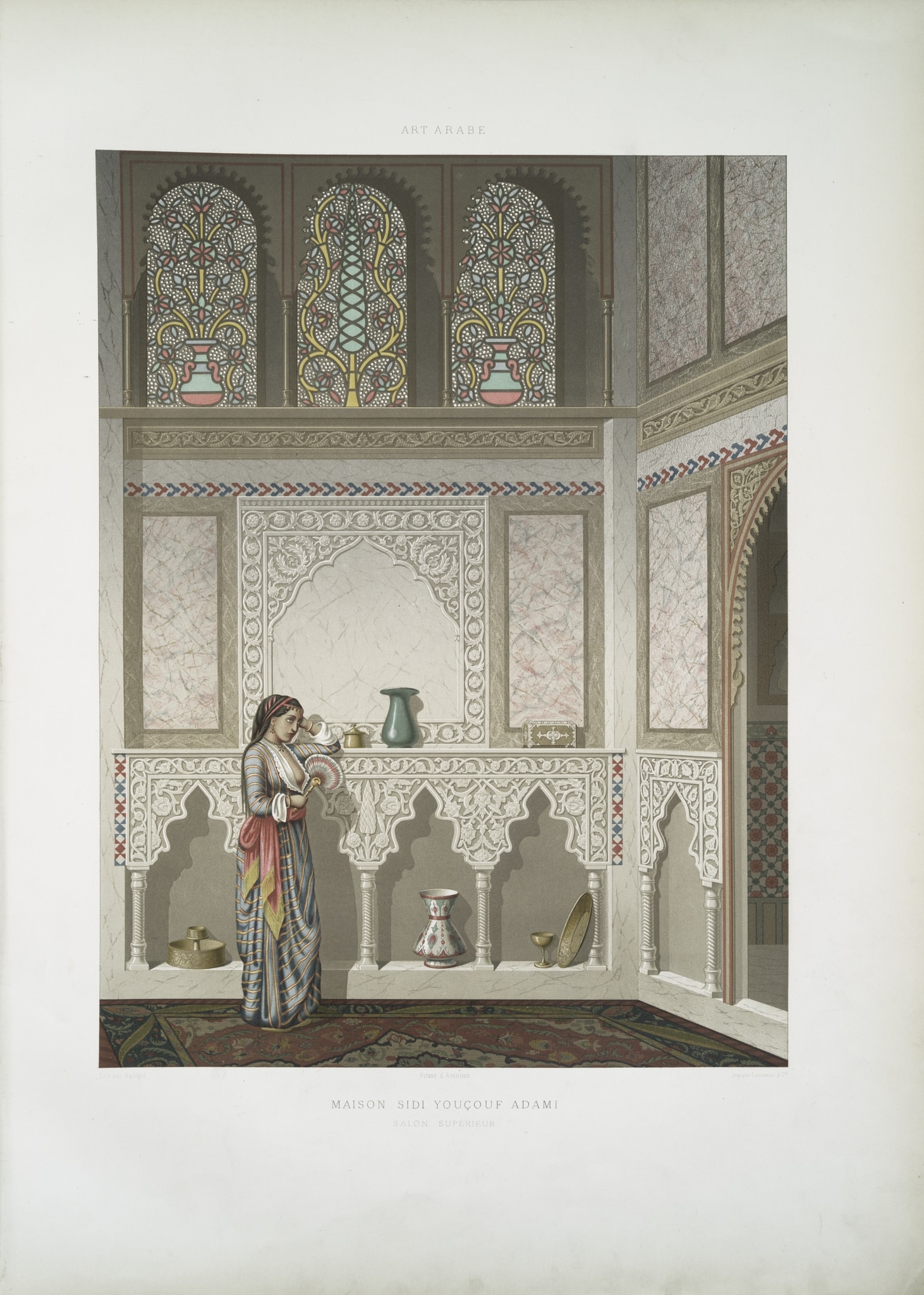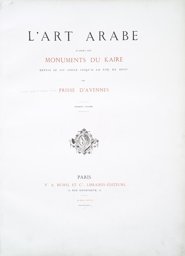Research
Émile Prisse d’Avennes published two illustrations from the ‘Maison Sidi Youçouf Adami’. He described this house, which – as far is known – no longer exists, as one of the most remarkable of Cairo and also made estampages of the stucco work (Fonds Prisse d’Avennes, Bibliothèque nationale de France). The Dutch painter Willem de Famars Testas (1834–1896), who accompanied Prisse d'Avennes on the trip to Egypt in 1858–1860, listed in the drawings he made for the archaeologist ‘Dessin de vitraux coloriés chez Mr Adami (Kaire)’. In his journal (around 29 June 1858), he mentioned the visit they made to Mr. Adami (Raven, 1988, p. 52, 194; Liste de mes occupations pour Mr* *Prisse lors de mon voyage en Egypte, Nr. 11).
The three stucco and glass windows are not inserted in a mashrabiyya, but in wall niches framed by polylobed arches. They show the widely used motifs of a cypress flanked by flower tendrils and a vase. Similar stucco and glass windows are preserved for example by The Metropolitan Museum of Art (93.26.1; IG_176) and the Victoria and Albert Museum (MES.LOST.32). However, Prisse d’Avennes depicts the vase and the cypress in an atypical way, with large pieces of glass.
Like many of the splendid panels from the Prisse d’Avennes’ publication, those with the stucco and glass windows were also used as sources for new artistic creations (see Keller, 2021, p. 521). For example, Rudolf Ernst (1854–1932) copied all three windows for his undated painting Les Captives (oil on panel, 36.9 by 45.8cm, at Christie’s New York on 25 October 1989; IG_153). Jean-Léon Gérôme (1824–1904) used the window with the vase, in the same atypically painted manner, for the window of the mosque in his painting, also undated, Rüstem Pasha Mosque Istanbul (IG_149).
In 1897, the windows were reprinted separately by Lewis Foreman Day, in his Windows. A Book About Stained & Painted Glass (fig. 8, 9).
Dating
1877
Related Locations
Place of Manufacture

